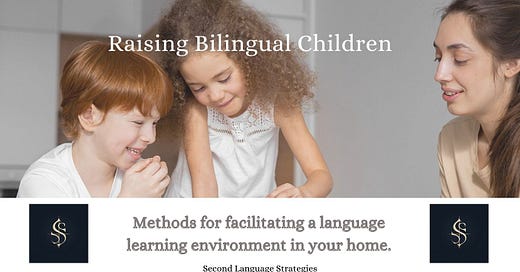Welcome aspiring polyglot! For those who have or plan to have children, I've already discussed various options for approaching language learning with your little ones. Undertaking bilingual education is one of the more difficult tasks for anyone, let alone someone who doesn't speak both languages that are being used. While it's far from impossible, it does necessitate a bit more planning. That's where I come in, though!
Keep reading with a 7-day free trial
Subscribe to Second Language Strategies to keep reading this post and get 7 days of free access to the full post archives.



